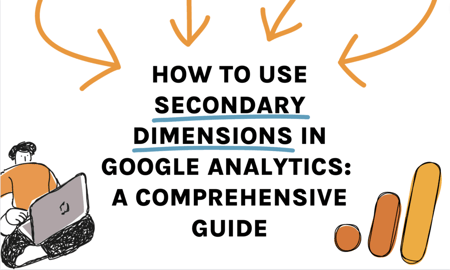Transform Your Information Understanding With Additional Dimensions
Exploring information via the lens of additional measurements opens up a realm of untapped insights, supplying an extra nuanced point of view on the ins and outs of your dataset. By unwinding the layers below the surface metrics, you can reveal patterns and connections that may have or else gone unnoticed, leading the way for notified decision-making and strategic optimizations. This critical usage of second measurements not only improves your data understanding yet likewise acts as a stimulant for opening the complete capacity of your analytics ventures.
Advantages of Second Dimensions

Second dimensions likewise make it possible for companies to carry out even more detailed efficiency examinations. By layering extra measurements onto existing data, organizations can examine the influence of different aspects on essential metrics, aiding them make even more educated decisions. In addition, second dimensions facilitate the identification of brand-new chances for optimization and growth by revealing relationships that may have otherwise gone unnoticed. In general, the use of additional dimensions results in much more robust and insightful data evaluation, encouraging organizations to drive strategic actions based on a deeper understanding of their information.

Exactly How to Apply Secondary Dimensions
To properly apply second measurements in data analysis, companies must initially determine crucial variables that line up with their logical objectives and objectives. It is vital to take into consideration how these secondary dimensions will provide added context and deepness to the key information being examined.

Studying Data With Additional Measurements
Making use of additional dimensions in information evaluation boosts the deepness and context of insights originated from key information. By integrating second dimensions right into your analysis, you can acquire an extra detailed understanding of the partnerships and patterns within your information. This process entails checking out the main data via different lenses or perspectives, which can disclose concealed correlations or fads that might not be right away apparent when assessing the data making use of only primary measurements.
Analyzing information with secondary measurements enables you to sector and group your information in different means, offering an extra nuanced view of your dataset. secondary dimensions. This division can assist you recognize certain factors that may be affecting the results you are studying. By drilling down right into the data making use of additional measurements, you can discover valuable understandings that can guide decision-making and method development
Finest Practices for Second Measurements
When incorporating additional measurements into information analysis, precision in specifying the measurements is crucial for drawing out purposeful insights. It is necessary to choose additional measurements that complement the main information properly. One best method is to select dimensions that supply look at here now additional context without overwhelming the evaluation. Bear in mind the certain objectives of the analysis and choose dimensions that straighten with those goals.
Another best method is to avoid redundancy in dimensions. Ensure that the secondary dimensions add brand-new point of views or information to the analysis, rather than duplicating information already present in the primary measurements. This will certainly aid protect against complication and improve the interpretation of the data.
Additionally, it is very important to think about the scalability of the analysis when selecting second measurements. Select dimensions that can be easily expanded or adjusted as required to fit future data requirements or changes in analytical focus. By adhering to these ideal methods, analysts can take full advantage of the value of secondary dimensions in data evaluation and gain deeper insights right into their datasets.
Making The Most Of Insights Through Second Measurements
Integrating secondary measurements tactically enhances information evaluation by providing a much deeper understanding of the connections within the dataset (secondary dimensions). By taking full advantage of insights via additional measurements, analysts can reveal useful patterns, trends, and dependences that may not be immediately noticeable when taking a look at the data through key dimensions alone
One secret dig this advantage of using secondary measurements is the capability to sector and filter data extra specifically. This segmentation allows for a much more granular analysis of details parts within the dataset, enabling experts to identify relationships and causations that may have otherwise been overlooked.
In addition, second dimensions can help in contextualizing key data factors by adding layers of details that use an even more comprehensive view of the information. This contextualization is crucial for making notified choices based on a holistic understanding of the dataset.
Conclusion
To conclude, including second measurements in data analysis procedures provides a more nuanced and thorough understanding of details, bring about improved understandings and strategic decision-making. By integrating additional variables that line up with logical objectives, concealed relationships and fads can be revealed, offering a much more in-depth my sources and contextualized sight of information. This technique optimizes the possibility for optimization and reveals brand-new possibilities within procedures.
On the whole, the utilization of second measurements leads to extra durable and insightful information evaluation, encouraging organizations to drive strategic activities based on a much deeper understanding of their information.
Using additional measurements in information analysis improves the depth and context of insights derived from primary data.Evaluating data with secondary measurements permits you to sector and group your data in numerous means, supplying a much more nuanced view of your dataset.When incorporating secondary measurements right into information analysis, accuracy in specifying the dimensions is essential for drawing out meaningful understandings. Make certain that the additional dimensions include brand-new point of views or details to the evaluation, instead than duplicating details already present in the primary measurements.